Chinese Pangolin
- February 9, 2024
- 0 comment
The Chinese pangolin, scientifically known as Manis pentadactyla, is a captivating creature native to various parts of Asia, including China and neighboring regions. This unique mammal has garnered attention for its remarkable features, notably its distinctive scaly armor made of keratin, reminiscent of an ancient dragon’s hide. Its elongated body, equipped with strong claws and a prehensile tail, reflects its adaptation to life on the forest floor, where it primarily resides.

Chinese pangolins have a special affinity for feasting on ants and termites, using their long, sticky tongues to extract their prey from underground colonies with remarkable precision. Despite their elusive nature, these pangolins play a vital role in their ecosystems, contributing to pest control and soil health through their foraging and burrowing activities. However, the Chinese pangolin faces a dire threat due to habitat loss, poaching, and illegal trade. Efforts to conserve this species are imperative to safeguard its existence and preserve the delicate balance of Asia’s diverse ecosystems.
| Specification | Description |
|---|---|
| Scientific Name | Manis pentadactyla |
| Common Name | Chinese Pangolin |
| Physical Characteristics | – Covered in scales made of keratin ,Long, slender body ,Brown or yellowish ,brown color ,Prehensile tail ,Strong claws for digging and climbing |
| Habitat | Forests, grasslands, and agricultural areas |
| Distribution | China, Vietnam, Laos, and other parts of Asia |
| Diet | Primarily ants and termites |
| Reproduction | Single offspring after gestation period of several months |
| Conservation Status | Critically Endangered |
| Threats | Habitat loss, poaching, illegal wildlife trade |
| Role in Ecosystem | Control of insect populations, soil aeration, and nutrient cycling |
| Cultural Significance | Revered in some cultures for medicinal properties, considered a symbol of luck or protection |
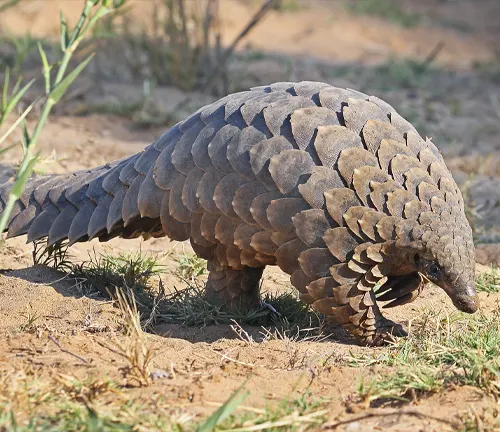
The Chinese pangolin, also known as Manis pentadactyla, is a species of pangolin native to various regions in Asia, including China and parts of Southeast Asia. Pangolins are unique mammals known for their scaly exterior and distinctive behavior. In recent years, these creatures have gained attention due to their threatened status and the illegal wildlife trade.
Physical Characteristics
Chinese pangolins are characterized by their scaly armor, which is composed of keratin, the same material found in human fingernails. They have long, slender bodies and are typically brown or yellowish-brown in color. Their tails are prehensile, allowing them to grasp objects, and they have strong claws for digging and climbing.
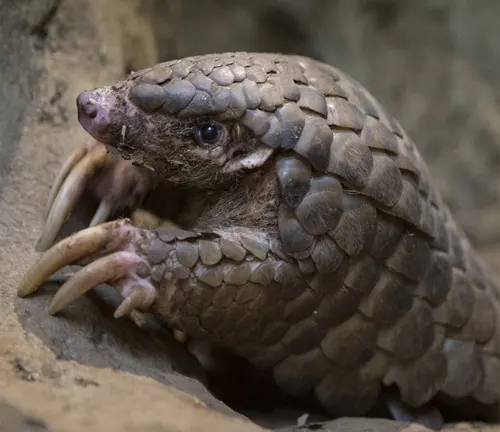
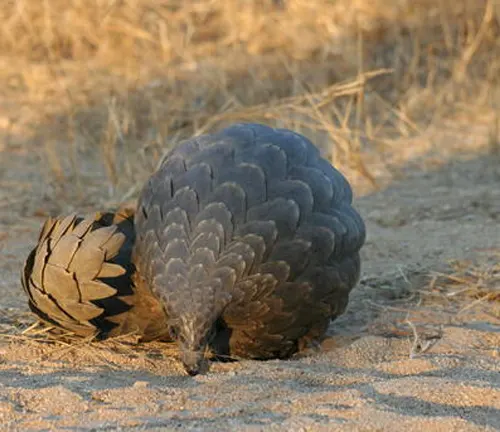
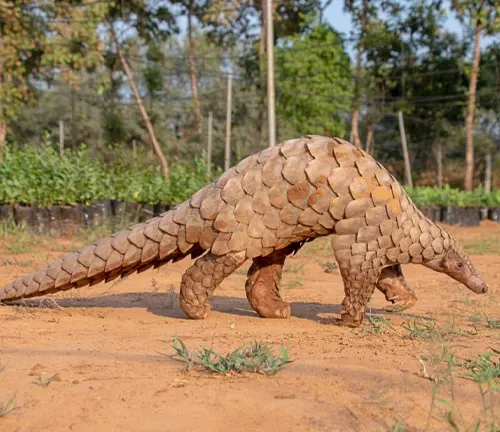
- Scaly Armor: The Chinese pangolin is covered in scales made of keratin, the same material found in human fingernails. These scales provide protection against predators and environmental hazards.
- Body Structure: It has a long, slender body, well-adapted for its burrowing lifestyle. The body is elongated and cylindrical in shape, allowing it to navigate through narrow spaces.
- Coloration: Chinese pangolins typically have a brown or yellowish-brown coloration, which helps them blend into their natural habitat of forests and grasslands.
- Prehensile Tail: The pangolin possesses a prehensile tail, which it uses to grasp onto branches and objects while climbing. The tail is muscular and flexible, aiding in its locomotion and balance.
- Claws: It has strong claws on its forelimbs, which are used for digging into termite mounds and ant nests to access its primary food source. These claws are sharp and well-suited for breaking through hard soil and wood.
- Sensory Organs: Chinese pangolins have well-developed senses of smell and hearing, which they rely on to locate prey and detect potential threats in their environment.
- Size: Adult Chinese pangolins typically measure around 50 to 60 centimeters (20 to 24 inches) in length, with males generally larger than females.
- Weight: The weight of Chinese pangolins varies, but they usually range from 2 to 7 kilograms (4.4 to 15.4 pounds), with males being slightly heavier than females.
Habitat and Distribution
These pangolins inhabit a variety of environments, including forests, grasslands, and agricultural areas. They are primarily found in regions with dense vegetation and access to water sources. Chinese pangolins are distributed across several countries in Asia, with populations in China, Vietnam, Laos, and other neighboring nations.
Diverse Habitats
Chinese pangolins inhabit a variety of habitats, including forests, grasslands, and agricultural areas. They are adaptable creatures capable of surviving in diverse environments, as long as there is sufficient vegetation and access to water sources. Within these habitats, they utilize burrows or dense vegetation for shelter and protection, often making use of natural features such as fallen logs or rock crevices.
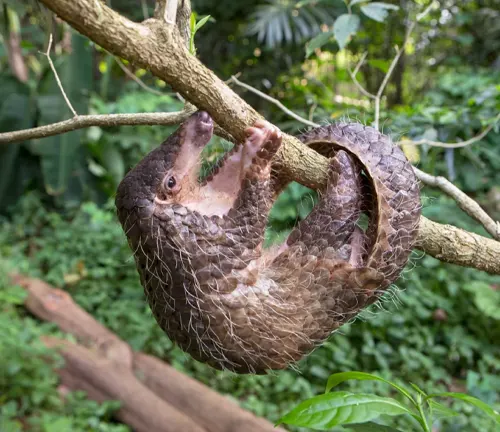
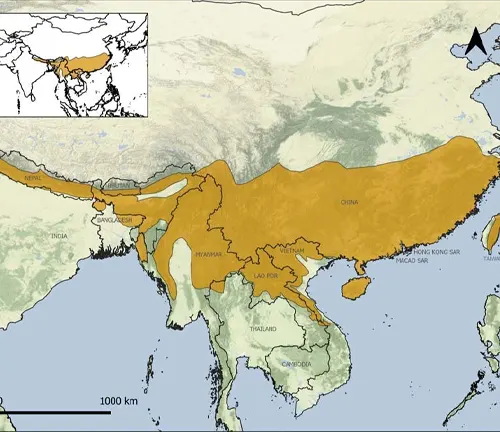
Geographical Range
Chinese pangolins have a relatively wide geographical range, although their populations are fragmented and declining due to various threats. They are found primarily in regions of Asia, including China, Vietnam, Laos, and other neighboring countries. However, their distribution within these countries can vary, with some areas experiencing higher densities of pangolins than others. Understanding the specific geographical range of Chinese pangolins is crucial for conservation efforts aimed at protecting their remaining populations and habitats.
Diet and Feeding Habits
Chinese pangolins are insectivorous, primarily feeding on ants and termites. They use their long, sticky tongues to capture prey from underground nests and anthills. Pangolins have specialized adaptations for feeding, including strong muscles in their tongues and stomachs to aid in digestion.
Insectivorous Diet: Chinese pangolins are primarily insectivores, meaning they primarily feed on insects. Their diet consists mainly of ants and termites, which they locate by scent and capture using their long, sticky tongues. This specialized diet is essential for their survival and provides them with the necessary nutrients and energy to thrive in their natural habitat.
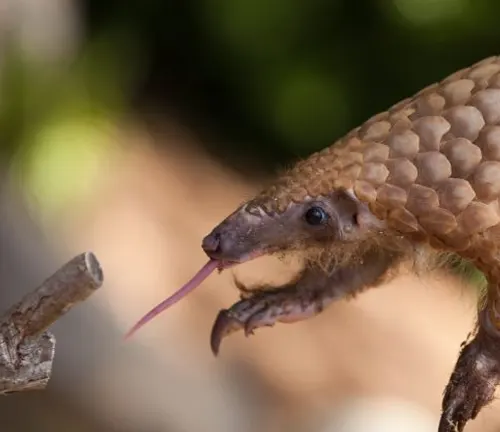
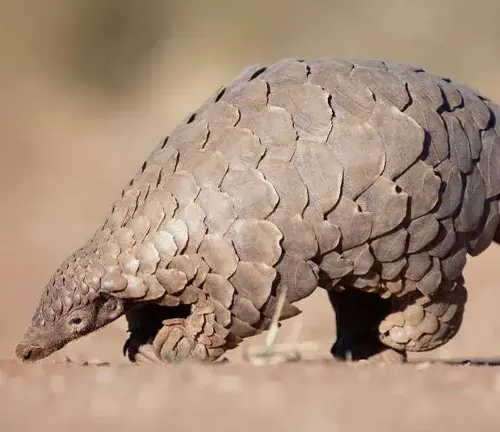
Foraging Behavior: Chinese pangolins are nocturnal animals, meaning they are most active during the night. They spend their nights foraging for food, using their keen sense of smell to locate ant and termite colonies. Once they find a suitable prey source, they use their powerful claws to dig into the ground or break into termite mounds, accessing the insects within. Their long, sticky tongues then dart in and out of the openings, lapping up the insects with remarkable speed and precision. This foraging behavior is a crucial aspect of their feeding habits, allowing them to efficiently obtain their primary food source in the wild.
Reproduction and Life Cycle
The reproductive behavior of Chinese pangolins is not well-documented due to their elusive nature. However, they are believed to have similar reproductive habits to other pangolin species. Females typically give birth to a single offspring after a gestation period of several months. The young pangolin is cared for by its mother until it is old enough to fend for itself.
Gestation Period
The gestation period of Chinese pangolins, like other pangolin species, is relatively long, lasting several months. During this time, the female carries the developing embryo inside her womb before giving birth to a single offspring. The exact duration of the gestation period varies among individuals but generally ranges from around 120 to 150 days.
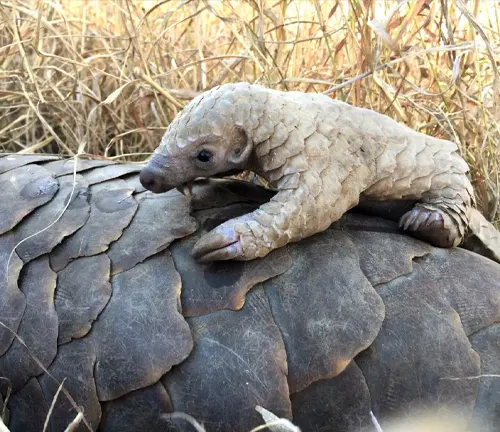
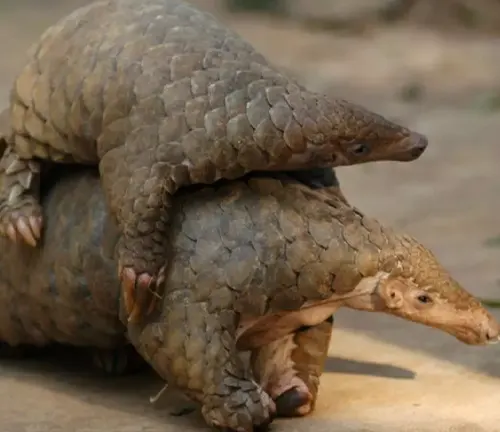
Maternal Care
After giving birth, female Chinese pangolins provide extensive maternal care to their offspring. The mother pangolin nurtures and protects her young, often carrying it on her back or tucked safely beneath her body. She nurses the offspring with milk produced in her mammary glands, ensuring its growth and development during the early stages of life. This maternal care is essential for the survival of the young pangolin, as it relies entirely on its mother for nourishment and protection until it becomes independent enough to fend for itself.
Conservation Status
Chinese pangolins are listed as critically endangered by the International Union for Conservation of Nature (IUCN). Their populations have declined significantly due to habitat loss, poaching, and illegal trade. Conservation efforts are underway to protect remaining populations and combat the threats facing these animals.
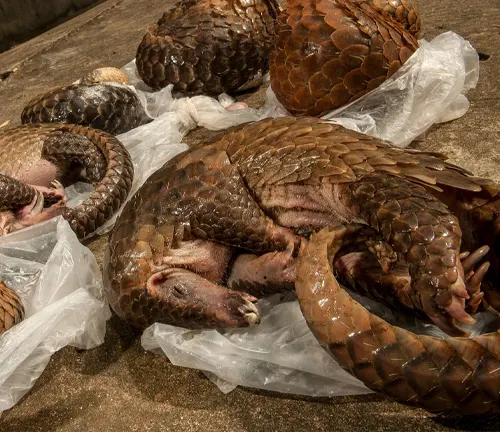
Threats to Chinese Pangolins
The main threats to Chinese pangolins include habitat destruction, hunting for their meat and scales, and the illegal wildlife trade. Pangolin scales are highly valued in traditional Chinese medicine, leading to widespread poaching and trafficking of these animals.
Different Species
Chinese Pangolin
(Manis pentadactyla)
Found primarily in China and parts of Southeast Asia, this species is characterized by its brown or yellowish-brown scaly armor and is listed as critically endangered.
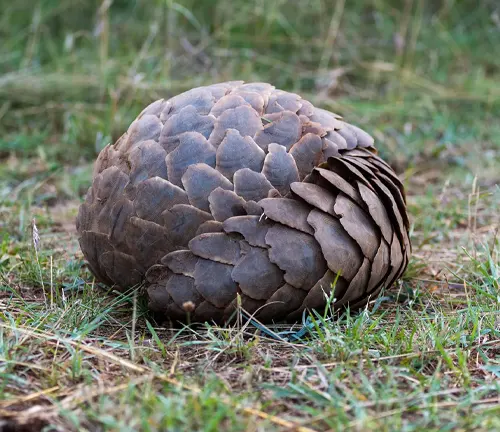
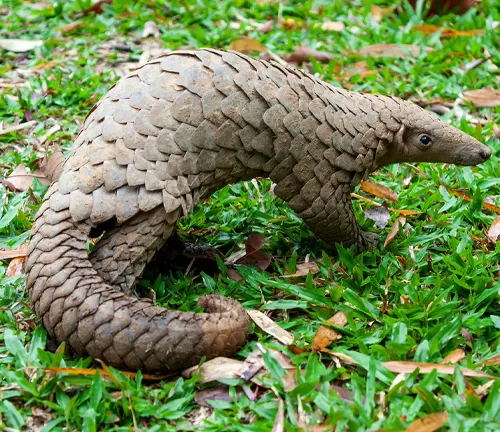
Sunda Pangolin
(Manis javanica)
Native to Southeast Asia, including Indonesia, Malaysia, and Thailand, the Sunda pangolin has a similar appearance to the Chinese pangolin but with some differences in scale patterns.
Indian Pangolin
(Manis crassicaudata)
Inhabiting the Indian subcontinent, the Indian pangolin has a darker coloration compared to its Chinese counterpart and is also listed as endangered.
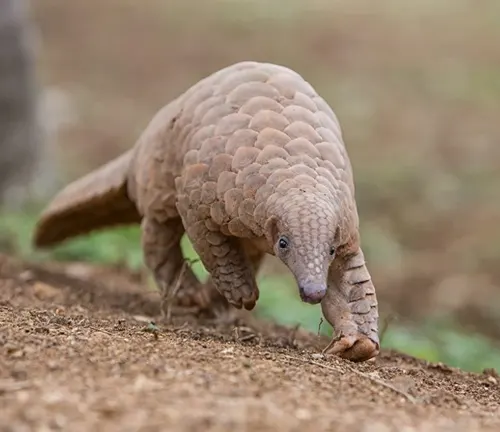
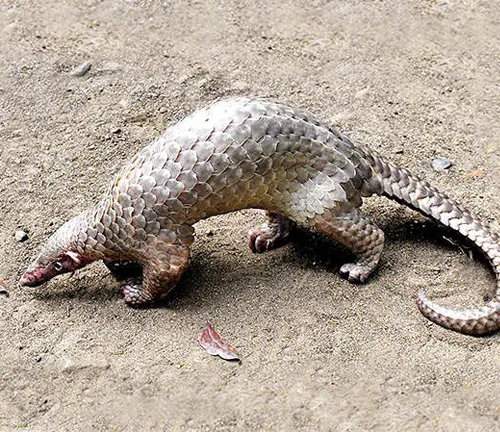
Palawan Pangolin
(Manis culionensis)
Found on Palawan Island in the Philippines, this subspecies of the Philippine pangolin is particularly vulnerable due to habitat destruction and illegal trade.
Giant Pangolin (Manis gigantea)
The largest species of pangolin, the giant pangolin inhabits central and western Africa and is listed as vulnerable due to habitat loss and hunting.
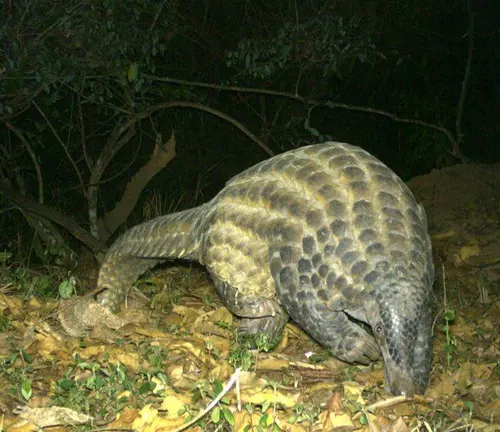
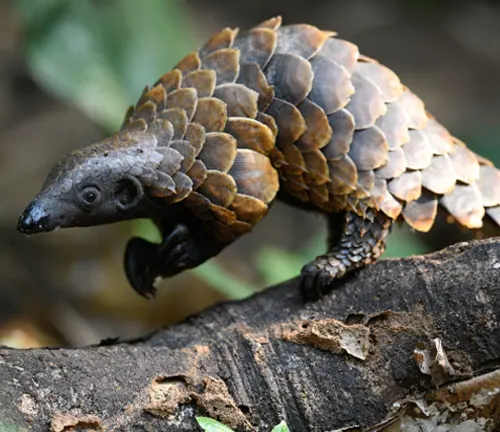
Black-Bellied Pangolin (Manis tetradactyla)
Found in parts of central and western Africa, this species has a distinct black belly and is threatened by deforestation and the bushmeat trade.
Frequently Asked Question (FAQs)
- What is the Chinese pangolin, and where does it live?
The Chinese pangolin (Manis pentadactyla) is a species of pangolin native to various regions in Asia, including China and parts of Southeast Asia. It is characterized by its scaly armor made of keratin and its preference for habitats such as forests, grasslands, and agricultural areas. - Why are Chinese pangolins endangered?
Chinese pangolins are endangered primarily due to habitat loss, poaching, and the illegal wildlife trade. Their scales are highly valued in traditional Chinese medicine, leading to extensive hunting and trafficking of these animals. - What are the main threats to Chinese pangolins?
The main threats to Chinese pangolins include habitat destruction, poaching for their meat and scales, and the illegal wildlife trade driven by demand for pangolin products, particularly in traditional medicine markets. - How many Chinese pangolins are left in the wild?
Exact population numbers of Chinese pangolins in the wild are difficult to determine due to their secretive nature and the challenges of studying them in their natural habitat. However, their populations have declined significantly in recent years, leading to their classification as critically endangered. - What is the conservation status of the Chinese pangolin?
The Chinese pangolin is classified as critically endangered by the International Union for Conservation of Nature (IUCN) due to the severe threats it faces from habitat loss, poaching, and illegal trade. - Are Chinese pangolins kept as pets?
Keeping Chinese pangolins as pets is illegal in many countries due to their protected status and specialized care requirements. However, they are sometimes captured and kept illegally by individuals. - What is the Chinese pangolin’s role in the ecosystem?
Chinese pangolins play a vital role in their ecosystems as insectivores, helping to control insect populations. Their digging and foraging activities also contribute to soil health and nutrient cycling. - Are Chinese pangolins aggressive towards humans?
Chinese pangolins are generally shy and non-aggressive animals, preferring to avoid confrontations with humans. They will typically roll up into a ball when threatened as a defense mechanism. - What is being done to protect Chinese pangolins?
Conservation efforts for Chinese pangolins include habitat protection, law enforcement to combat poaching and illegal trade, public awareness campaigns, and rehabilitation and release programs for confiscated animals. - What is the lifespan of a Chinese pangolin in the wild?
The lifespan of Chinese pangolins in the wild is not precisely known, but they are believed to live up to 10-20 years. - Can Chinese pangolins be bred in captivity to boost wild populations?
Efforts to breed Chinese pangolins in captivity are underway in some conservation centers and zoos to help supplement wild populations and support conservation efforts. However, breeding pangolins in captivity is challenging and requires specialized care. - How do Chinese pangolins defend themselves from predators?
Chinese pangolins defend themselves from predators by rolling into a tight ball, using their sharp scales as armor to protect their vulnerable underside. They may also emit a foul-smelling substance from glands near their anus as a deterrent. - Are Chinese pangolins nocturnal or diurnal animals?
Chinese pangolins are nocturnal animals, meaning they are primarily active during the night, when they forage for food and engage in other activities. - What are the reproductive habits of Chinese pangolins?
The reproductive habits of Chinese pangolins are not well-documented, but they are believed to give birth to a single offspring after a gestation period of several months. The young pangolin is cared for by its mother until it is old enough to fend for itself. - How do Chinese pangolins communicate with each other?
Chinese pangolins primarily communicate through vocalizations and scent markings, although their communication methods are not as well understood as other aspects of their behavior. They may use vocalizations to communicate with potential mates or offspring and use scent markings to establish territory or communicate with other pangolins.



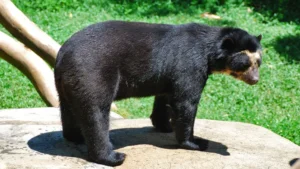
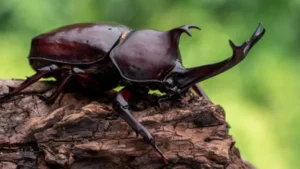





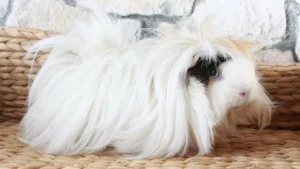

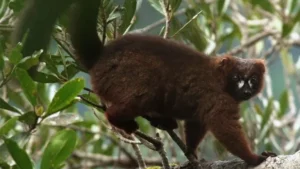

Leave your comment